
The Ohio class of nuclear-powered submarines includes the United States Navy's 14 ballistic missile submarines (SSBNs) and its four cruise missile submarines (SSGNs). Each displacing 18,750 tons submerged, the Ohio-class boats are the largest submarines ever built for the U.S. Navy. They are the world's third-largest submarines, behind the Russian Navy's Soviet-designed 48,000-ton Typhoon class and 24,000-ton Borei class. At 20 Trident II missiles apiece, Ohio-class boats carry just as many missiles, if not more, than either the Borei class or the deactivated Typhoon class (20).

USS Ohio (SSBN-726/SSGN-726), the lead boat of her class of nuclear-powered fleet ballistic missile submarines (SSBN), is the fourth vessel of the United States Navy to be named for the U.S. state of Ohio. She was commissioned with the hull designation of SSBN-726, and with her conversion to a guided missile submarine she was re-designated SSGN-726.

The George Washington class was a class of nuclear-powered ballistic missile submarines deployed by the United States Navy. George Washington, along with the later Ethan Allen, Lafayette, James Madison, and Benjamin Franklin classes, comprised the "41 for Freedom" group of submarines that represented the Navy's main contribution to the nuclear deterrent force through the late 1980s.

USS Halibut (SSGN-587), a unique nuclear-powered guided missile submarine-turned-special operations platform, later redesignated as an attack submarine SSN-587, was the second ship of the United States Navy to be named after the halibut.
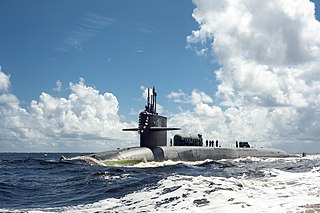
USS Georgia (SSBN-729/SSGN-729), an Ohio-class submarine, is the second vessel of the United States Navy to be named for the U.S. state of Georgia.

Naval Submarine Base Kings Bay is a base of the United States Navy located adjacent to the city of St. Marys in Camden County, Georgia, on the East River in southeastern Georgia, and 38 miles (61 km) from Jacksonville, Florida. The Submarine Base is the U.S. Atlantic Fleet's home port for U.S. Navy Fleet ballistic missile nuclear submarines capable of being armed with Trident missile nuclear weapons. This submarine base covers about 16,000 acres of land, of which 4,000 acres are protected wetlands.
There are three major types of submarines in the United States Navy: ballistic missile submarines, attack submarines, and cruise missile submarines. All submarines currently in the U.S. Navy are nuclear-powered. Ballistic missile submarines have a single strategic mission of carrying nuclear submarine-launched ballistic missiles. Attack submarines have several tactical missions, including sinking ships and subs, launching cruise missiles, and gathering intelligence. Cruise missile submarines perform many of the same missions as attack submarines, but with a focus on their ability to carry and launch larger quantities of cruise missiles than typical attack submarines.

Bruce Estes Grooms, is a retired vice admiral in the United States Navy. His last duty station before retirement was as Deputy Chief of Staff for Capability Development at Allied Command Transformation. He retired in June 2015.

Kirkland Hogue "Kirk" Donald is a retired Admiral in the United States Navy, who in his last assignment served as the dual-hatted position of Director of Naval Nuclear Propulsion and Deputy Administrator of the National Nuclear Security Administration. Donald previously served as Commander, Submarine Force, U.S. Atlantic Fleet, and Commander, Submarine Allied Command, Atlantic. He retired from active duty on November 2, 2012.

Miles Benton "Ben" Wachendorf is a retired Rear Admiral in the United States Navy.
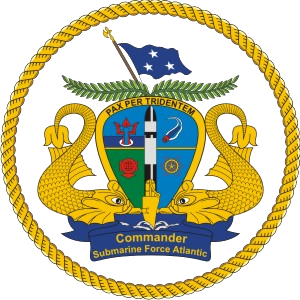
The Commander, Submarine Force Atlantic (COMSUBLANT) is the Submarine Force U.S. Atlantic Fleet type commander under the United States Fleet Forces Command.

The Commander, Submarine Force, U.S. Pacific Fleet (COMSUBPAC) is the principal advisor to the Commander, United States Pacific Fleet (COMPACFLT) for submarine matters. The Pacific Submarine Force (SUBPAC) includes attack, ballistic missile and auxiliary submarines, submarine tenders, floating submarine docks, deep submergence vehicles and submarine rescue vehicles throughout the Pacific.
Kenneth Monroe Carr was a U.S. Navy vice admiral who was Deputy and Chief of Staff to the Commander in Chief Atlantic Command and the Commander in Chief of the U.S. Atlantic Fleet. He retired from the navy on May 1, 1985. He became Chairman of the U.S. Nuclear Regulatory Commission on July 1, 1989 having been a member of the Commission since August 14, 1986.

Kinnaird Rowe McKee was an American United States Navy four star admiral who served as Director, Naval Nuclear Propulsion from 1982 to 1988. He also served as Superintendent, United States Naval Academy from 1975 to 1978.

Patrick Hahler Brady is a retired United States Navy rear admiral who in July 2007 became the first person of Hispanic descent to be named commander of the Naval Undersea Warfare Center. At the time, he was one of four admirals of Hispanic descent who were serving in the United States Navy. He later served four years as head of the Space and Naval Warfare Systems Command.
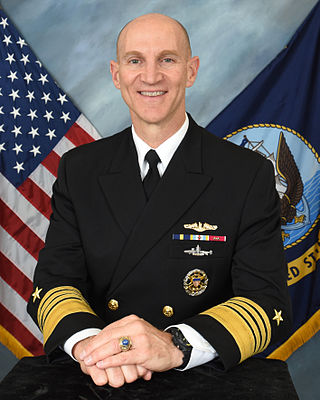
James Franklin "Frank" Caldwell Jr. is a retired admiral in the United States Navy who last served as director of the Naval Nuclear Propulsion Program, a job once held by the program's creator, Admiral Hyman G. Rickover. He previously served as Naval Inspector General.
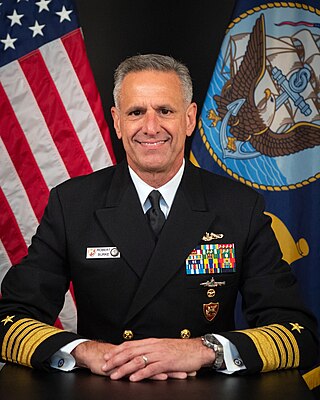
Robert Peter Burke is a retired United States Navy admiral who last served as the commander of United States Naval Forces Europe-Africa and Allied Joint Force Command Naples from 17 July 2020 to 27 June 2022. He served as Vice Chief of Naval Operations from 10 June 2019 until 29 May 2020, having previously served as the 58th Chief of Naval Personnel from 27 May 2016 to 23 May 2019.

James Gordon Foggo III is a retired United States Navy admiral who last served as commander of United States Naval Forces Europe-Africa and commander of Allied Joint Force Command Naples. He previously served as the director of Navy Staff. Prior to that, he served as the commander of United States Sixth Fleet. He assumed his last assignment on October 20, 2017. On July 17, 2020, he relinquished command of United States Naval Forces Europe-Africa and Allied Joint Forces Command Naples to Admiral Robert P. Burke.
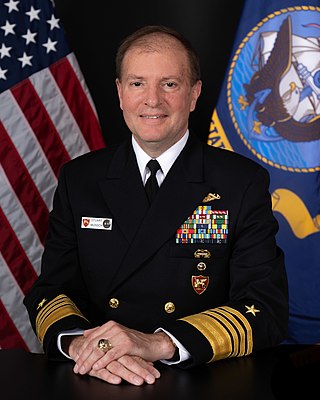
Stuart Benjamin Munsch is a United States Navy admiral who serves as the commander of United States Naval Forces Europe-Africa and commander of Allied Joint Force Command Naples since June 27, 2022. He most recently served as the director for joint force development, J7, of the Joint Staff from 2020 to 2022.



















